|
Your novel’s written in first person. Here are some tips for how to ensure your narrative doesn’t become overloaded with ‘I’ but remains immersive.
|
|
Maycomb was an old town, but it was a tired old town when I first knew it. In rainy weather the streets turned to red slop; grass grew on the sidewalks, the court-house sagged in the square. Somehow, it was hotter then; a black dog suffered on a summer’s day; bony mules hitched to Hoover carts flicked flies in the sweltering shade of the live oaks on the square. Men’s stiff collars wilted by nine in the morning. Ladies bathed before noon, after their three o’clock naps, and by nightfall were like soft tea-cakes with frostings of sweat and sweet talcum.
People moved slowly then. They ambled across the square, shuffled in and out of the stores around it, took their time about everything. A day was twenty-four hours long but seemed longer. There was no hurry, for there was nowhere to go, nothing to buy and no money to buy it with, nothing to see outside the boundaries of Maycomb County. But it was a time of vague optimism for some of the people: Maycomb County had recently been told that it had nothing to fear but fear itself. |
Notice the (almost) absence of ‘I’. Scout – our narrator – tells us about the town she lived in: Maycomb. The recollection is hers certainly – ‘when I first knew it’ anchors it as such. It’s therefore intimate.
And yet because there’s only one I-nudge, we’re allowed enough emotional distance to step back and pan, like a roving camera, across Maycomb’s vista. We’re dislocated from Scout’s doing the experiencing and encouraged instead to focus on what she’s experiencing.
What’s happening here is a shift from the subjective to the objective.
Here’s an example of a short excerpt that’s subjective. The focus is on the I-narrator.
And here’s the real excerpt from David Rosenfelt’s Play Dead (Grand Central, 2009, p. 19). Now the focus is objective, yet in no way does this distance us from the centrality of the first-person narrator’s experience. We’re still deep in his head.
2. Reduce the use of filter words
Examples include noticed, seemed, spotted, saw, realized, felt, thought, wondered, believed, knew, and decided.
Filter words focus the reader’s gaze inwards (interior focus) on the manner through which the viewpoint character experiences the world – the how.
They come with a pronoun: I saw, they believed, we decided, she knew, he noticed.
By removing filter words, the reader’s gaze is shifted outwards (exterior focus) and onto what is being experienced. That can make for a more immersive read. Plus, the omission means we say goodbye to their accompanying pronoun: 'I'.
Here are a few examples to give you a flavour of how you might recast in a way that avoids first-person filtering.
|
‘I’ plus filter word. Reader’s gaze is inwards, on the how
|
Recast: Reader’s gaze drawn outwards towards the what
|
|
I recall the argument we had last week.
|
Last week’s argument is still fresh in my mind.
|
|
I recognized the man’s face.
|
The man’s face was familiar.
|
|
I saw the guy turn left and dart into the alley.
|
The guy turned left and darted into the alley.
|
|
I spotted the red Chevy from yesterday parked outside the bank.
|
There, parked outside the bank, was the same red Chevy from yesterday.
|
|
I still feel ashamed about the vile words I unleashed even after all these years.
|
The vile words I unleashed still have the power to bathe me in shame even after all these years.
|
3. Remove speech and thought tags
This will work best if there are no more than two characters. Most writers don’t extend the omission for more than a few back-and-forths before they introduce a reminder tag or an action beat.
Watching out for unnecessary tags is good practice regardless of narration style, but with a first-person narration it’s a particularly efficient way to declutter ‘I’-heavy prose.
Take a look at this excerpt from David Rosenfelt’s Play Dead, pp. 194–5. There are two characters in this scene: Andy Carpenter, the protagonist and narrator, and Sam Willis, the non-POV character on the other end of the phone.
“The woman's name is Donna Banks. She lives in apartment twenty-three-G in Sunset Towers in Fort Lee. I don't have the exact address, but you can get it.”
“Pretty swanky apartment,” he says.
“Right. I want you to find out the source of that swank.”
“What does that mean?”
“I want to know how she can afford it. She doesn't work, and she's the widow of a soldier. Maybe her name is Banks because her family owns a bunch of them, but I want to know for sure.”
“Got it.”
“No problem?” I ask. I'm always amazed at Sam's ability to access any information he needs.
“Not so far. Anything else?”
“Yes. I left her apartment at ten thirty-five this morning. I want to know if she called anyone shortly after I left, and if so, who.”
“Gotcha. Which do you want me to get on first? Although neither will take very long.”
“I guess her source of income.”
“Then say it, Andy.”
“Say what?”
“Come on, play the game. You're asking me to find out where she gets her cash. So say it.”
“Sam …”
“Say it.”
“Okay. Show me the money.”
“Thatta boy. I'll get right on it.”
The exchange involves 19 speech elements within the thread, but only 3 speech tags, and only one of those marks our first-person narrator.
At no point do we lose track, and at no point are we distracted by repetitive ‘I said’s.
4. Apply the principles of free indirect speech
In a nutshell, free indirect speech offers the essence of first-person dialogue or thought but through a third-person viewpoint. The character’s voice takes the lead, but without the clutter of speech marks, speech tags, italic, or other devices to indicate who’s thinking or saying what.
Here’s an example of third-person narration. Notice the filter words ‘glanced’ and ‘noticed’, the italic present-tense thought, and the thought tag:
Let’s change that to a first-person narration. The filter words are still there and there’s a thought tag with the ‘I’ pronoun.
Here’s what the third-person version could look like in free indirect style. The filter words and tags are gone. It feels like a first-person thought but the base tense and third-person narration remain intact.
And now the first-person version. All I’ve done is swapped out the pronoun ‘his’ for ‘my’.
5. Take the ‘I’ out of introspection
However, when prose is littered rather than peppered with constructions such as I wasn’t sure if, I didn’t know whether, I wondered if, it can feel muddled and be laborious to read. The reader might respond: Well, of course you’re wondering. Who else could it be? You’re the narrator.
Worse, readers might think the narrator’s rather self-absorbed and unsure of themselves. While that might be necessary now and then, it’s problematic if it’s a staple because a narrator who’s always focused on themselves, and who never instils confidence in us, can’t tell the story as effectively.
Look out for ‘I’-centred introspection and experiment with statements and questions that allow the ‘I’ to be assumed.
Here are a few examples to show you how it might work.
|
‘I’-centred introspection
|
‘I’-less introspection
|
|
I wasn’t sure if Shami was a reliable witness but I couldn’t afford to ignore her, given what she’d divulged.
|
Was Shami a reliable witness? Maybe, maybe not. She couldn’t be ignored given what she’d divulged.
|
|
I still didn’t know who the killer was.
|
The killer’s identity was still a mystery.
|
|
I wondered whether Shami was a reliable witness.
|
Shami might or might not be a reliable witness.
Shami’s reliability as a witness was hardly a given. Shami’s reliability as a witness was questionable. |
6. Balance ‘I’ with ‘we’
This is an opportunity to frame the narrative around ‘we’ rather than just ‘I’.
Here’s an excerpt from To Kill a Mockingbird (p. 162) in which Scout, Harper Lee’s first-person narrator, frames the recollection around not just her own experience but those of the people she was hanging out with.
A wagonload of unusually stern-faced citizens appeared. When they pointed to Miss Maudie Atkinson's yard, ablaze with summer flowers, Miss Maudie herself came out on the porch. There was an odd thing about Miss Maudie – on her porch she was too far away for us to see her features clearly, but we could always catch her mood by the way she stood. She was now standing arms akimbo, her shoulders drooping a little, her head cocked to one side, her glasses winking in the sunlight.
The effect is powerful because we’re shown rather than told a sense of her belonging, of her being in a group, of the togetherness of that experience. And that intensifies our immersion in her world.
Summing up
Try recasting sentences that start with ‘I’ more objectively, so that the focus is on the what – the emotion, the object, the person, the action and so on – rather than the sense being used to experience it or the I-narrator doing the experience.
Use the principles of free indirect speech to reduce your ‘I’ count. It’s a tool that encourages a narrowing of narrative distance to such a degree that the reader feels deeply connected to the viewpoint character – more like we’re reading a thought than straight narrative.
As for speech and thought tags, you might not need as many as you think. The speaker can usually be identified without them if there are only two people in the conversation. Removing redundant tags is worth considering whichever narration style you’re writing in.
Related resources
- 3 reasons to use free indirect speech
- 6 ways to improve your novel right now
- Author resource library (includes links to free webinars)
- Editing Fiction at Sentence Level: A Guide for Beginner and Developing Writers
- Filter words in fiction: Purposeful inclusion and dramatic restriction
- Making Sense of Point of View: Transform Your Fiction 1
- What is head-hopping, and is it spoiling your fiction writing?
- Switching to Fiction: Course for new fiction editors
She is an Advanced Professional Member of the Chartered Institute of Editing and Proofreading (CIEP), a member of ACES, a Partner Member of The Alliance of Independent Authors (ALLi), and co-hosts The Editing Podcast.
- Get in touch: Louise Harnby | Fiction Editor & Proofreader
- Connect: Twitter at @LouiseHarnby, Facebook and LinkedIn
- Learn: Books and courses
- Discover: Resources for authors and editors
What is a brand palette?
|
|
For example, we can upload on-brand images to our Facebook, Twitter and LinkedIn headers, but we can’t change the colour of the links or icons on our posts.
And members of the Chartered Institute of Editing and Proofreading who advertise in its Directory of Editorial Services can upload on-brand headshots, videos and images to their listings but must work within the CIEP’s unique brand palette.
Do the best you can in the spaces you don’t control. In those you do, go for consistency. Here’s why it’s important.
Why a consistent brand palette is powerful
Editorial brand palettes work the same way. They make us recognizable such that our colleagues, clients, friends and business partners can identify us in online spaces before they’ve dug into the detail of our messaging.
If we’ve already built trust with those people, they’re more likely to take the time to engage with our content because they know who it’s from.
Of course, they can also decide not to engage with us when our brand colours pop up in their social feeds or email inboxes because they’re not interested in us. Being recognizable means we don’t waste their time, and they don’t waste ours!
Deciding on your brand-palette rules
My brand palette comprises grey, white, grape, maroon and teal. My brand-palette rules include the following:
- Brand-colour gradients are allowed on some sections of my website
- Tints, shades and tones of my brand colours are allowed if UX will be improved
- Buttons on my website must always be solid teal
- Linked text must always be maroon with a teal hover
- Blog-post images take grape boxes on greyscale images
If you’re the kind of editor who can hold several hex colours in your head, all power to you. I’m not. I need to record them so I can access them quickly and remind myself of the ‘rules’ I’ve created.
That's why I built a brand book.
How to record your brand palette
It's also a one-stop-shop you can send to creative consultants if you’re commissioning artwork or design services.
Don't stop at colours! Use it record all your editorial business's brand essentials. For example:
|
|
If you’ve already bought one of them, log in to access the template, then copy it and edit it to create your own brand book quickly.
Summing up
Pick your colours and stick to them. Then keep a record of your choices. It means you can be sure you’ll be on brand everywhere!
She is an Advanced Professional Member of the Chartered Institute of Editing and Proofreading (CIEP), a member of ACES, a Partner Member of The Alliance of Independent Authors (ALLi), and co-hosts The Editing Podcast.
FIND OUT MORE
> Get in touch: Louise Harnby | Fiction Editor & Proofreader
> Connect: Twitter at @LouiseHarnby, Facebook and LinkedIn
> Learn: Books and courses
> Discover: Resources for authors and editors
Why speech in a novel is different
Every line of dialogue should have a purpose. If it doesn’t, it probably shouldn’t be in your book.
It can take courage to remove words you've spent an age crafting but as I hope to show in the example below, readers don't need every little detail. Less is so often more!
A three-pronged approach to dialogue
When we focus on those three things, we avoid dull dialogue – conversations about the weather, how someone takes their tea or coffee, and courtesy statements such as ‘Hi, how are you?’
Voice tells us who characters are, what makes them tick – their fears, frustrations, hopes and dreams, identity, preferences.
Perhaps their speech is abrupt, rude, measured, polite, sweary or seductive.
When we change the way a character speaks, we change their voice. And that means we change them.
Characters can show us how they’re feeling via their dialogue.
Emotionally evocative speech allows readers to access the internal experience of a non-viewpoint character. And that makes it a powerful tool.
Perhaps their speech is abrupt, assertive, hesitant, forceful, pleading. Using the right words means the speech tags and narrative won’t need to be cluttered with further explanation.
Intention is another way of framing subtext. How characters speak tells us what they want.
Perhaps they’re asking questions for the purpose of discovery and understanding whodunit (doctors, lawyers, PIs and police officers regularly use dialogue in novels to this end). Dialogue can express a multitude of motivations.
Ask yourself what your character wants every time they open their mouth.
Example: Real but mundane dialogue
“Hi, Kevin,” I say.
“Hey, Andy. How you doin’?”
“Not too bad, thanks. Christ, it’s cold out though. I need something to warm me up. Gonna grab a coffee. Want one? Laurie, you?”
Kevin nods.
Laurie says, “Please. Milk and sugar.”
“So Kevin,” I say as I hand around the drinks, “we need to talk about Petrone.”
It’s the first chance I’ve had to tell Kevin about my meeting with the guy. I fill him in. When I get to the part where Petrone denied trying to have me killed, Kevin asks, “And you believed him?”
“I did.”
“Just because that’s what he said?”
I nod. “As stupid as it might sound, yes. I’ve had dealings with him before, and he’s always told me the truth, or nothing at all. And he had nothing to gain by lying.”
“Andy, the guy has had a lot of people murdered. How many confessions has he made?”
Were you enthralled by the welcome and refreshments section, or did you just wish we could get to the point? I think I know the answer!
The slimmed-down version
These meetings are basically of dubious value, since all we seem to do is list the things we don’t understand in our preparation for a trial we don’t know will even take place.
It’s the first chance I’ve had to tell Kevin about my meeting with Petrone. I fill him in. When I get to the part where Petrone denied trying to have me killed, Kevin asks, “And you believed him?”
“I did.”
“Just because that’s what he said?”
I nod. “As stupid as it might sound, yes. I’ve had dealings with him before, and he’s always told me the truth, or nothing at all. And he had nothing to gain by lying.”
“Andy, the guy has had a lot of people murdered. How many confessions has he made?”
What readers don’t care about
And so he leaves all of that out and lets the reader imagine that this stuff took place. And it’s enough. In the published novel, as opposed to the version I butchered, the first line of speech is “And you believed him.”
With that, we’re straight into Kevin’s incredulity and concern, and his desire to understand what the team is dealing with in regard to Petrone.
Meanwhile, Andy has his lawyer hat on. His initial reply is succinct, so that we are left in no doubt about his belief that Petrone was telling the truth, and that he is determined to reassure Kevin.
This is no-messing dialogue that focuses on story, not whether the speech is what we might actually hear – in its entirety – in real life.
It’s an excellent example of an author ensuring that every word counts and that there’s no bus-stop-talk filler.
Summing up
- Is every line relevant to the story?
- Is the character speaking with purpose or taking up ink/pixels on the page?
- Can mundane chitchat be removed without damaging sense and flow?
- Could the dull stuff be replaced with speech that deepens character?
Want the booklet version of this post? It's available on my Dialogue resources library. Click on the cover below to hop over to the page. Once you're there, choose the Booklets icon.
More fiction editing resources for authors and editors
- Editing Fiction at Sentence Level
- Making Sense of ‘Show, Don’t Tell’
- Making Sense of Point of View
- Making Sense of Punctuation
- How to Write the Perfect Fiction Editorial Report
- Switching to Fiction
- The Differences Between Developmental Editing, Line Editing, Copyediting and Proofreading (free webinar)
- How to Punctuate Dialogue in a Novel (free webinar)
- Resource library: Dialogue and thoughts
She is an Advanced Professional Member of the Chartered Institute of Editing and Proofreading (CIEP), a member of ACES, a Partner Member of The Alliance of Independent Authors (ALLi), and co-hosts The Editing Podcast.
FIND OUT MORE
> Get in touch: Louise Harnby | Fiction Editor & Proofreader
> Connect: Twitter at @LouiseHarnby, Facebook and LinkedIn
> Learn: Books and courses
> Discover: Resources for authors and editors
What's covered in this post
- How there are multiple Englishes with different spellings
- The difference between spelling style and voice
- A case study from the 007 files
- Overcoming ‘But it looks wrong’
- Adding regional flavour to voice
- 3 examples of when spelling inconsistency works
- A note on suffixes, dashes and quotation marks
Multiple Englishes, different spellings
Most words are spelled the same regardless of which English is in play, though there are many that aren’t, for example ‘color’/’colour’, ‘judgment’/‘judgement’, ‘harmonize’/‘harmonise’, ‘behavior’/‘behaviour’, ‘gray’/‘grey’, 'liter'/'litre'.
None are right or wrong, better or worse, or correct or incorrect. Rather, the way each version of English is spelled is about convention and style.
This post uses examples of American English (AmE) and British English (BrE) style to explain how to approach spelling/voice conundrums in fiction.
The difference between spelling style and voice
- How the words in a novel are spelled is for the most part a question of style.
- What a character says, thinks, feels, and the words used to report this on the page, is a question of voice. This is the case for dialogue and narrative.
Voice isn’t something that’s spelled. Rather, it’s something the reader experiences, ‘hears’ with their mind’s ear. It therefore follows the base spelling style, regardless of where the character comes from. With that in mind:
- If you’re writing fiction, decide on your spelling style and stick to it.
- If you’re editing for an author, identify the spelling style and aim for consistency.
The easiest way to illustrate how spelling consistency works is with a case study. Let’s take a peek into the world of 007!
A case study from the 007 files
The version from Hodder & Stoughton (part of Hachette UK), published in 2011, is styled as follows:
‘Now, I’m ninety per cent sure he’ll believe you,’ Bond said. ‘But if not, and he engages, remember that under no circumstances is he to be killed. I need him alive. Aim to wound in the arm he favours, near the elbow, not the shoulder.’ Despite what one saw in the movies, a shoulder wound was usually as fatal as one to the abdomen or chest.
The Night Action alert meant an immediate response was required, at whatever time it was received. The call to his chief of staff had blessedly cut the date short and soon he had been en route to Serbia, under a Level 2 project order, authorising him to identify the Irishman, plant trackers and other surveillance devices and follow him.
The version from Pocket Star Books (a division of Simon and Schuster), published in 2012, is styled as follows:
“Now, I’m ninety percent sure he’ll believe you, Bond said. “But if not, and he engages, remember that under no circumstances is he to be killed. I need him alive. Aim to wound in the arm he favors, near the elbow, not the shoulder.” Despite what one saw in the movies, a shoulder wound was usually as fatal as one to the abdomen or chest.
The Night Action alert meant an immediate response was required, at whatever time it was received. The call to his chief of staff had blessedly cut the date short and soon he had been en route to Serbia, under a Level 2 project order, authorizing him to identify the Irishman, plant trackers and other surveillance devices and follow him.
Later in the novel (Chapter 26), Felix Leiter, an American, joins Bond on his mission. Here’s how Leiter’s dialogue is rendered in the AmE version:
And here it is in the BrE version. Leiter is still American and still has the same distinct voice, but now the spelling has changed (as has the punctuation; note the spaced en dash and single quotation marks).
Overcoming ‘But it looks wrong’
For example, perhaps they use idiomatic phrases that wedge them firmly in a country, state/province/county or even town/city that we’re from.
The British editor working on a book set in Southern California and written by an American author who writes in AmE might well struggle when a viewpoint character from Norfolk (the UK one where I live) turns up in Santa Barbara and mutters the following on seeing a cluster of huge ladybirds:
“Look at the color o’ them bishy barnabees. And big as a thruppence too!”
The spelling of ‘color’ might jar because ‘thruppence’ is so clearly unAmerican, so very British, while ‘bishy barnabees’ is particular to Norfolk. And yet the spelling is (and should be) AmE if that’s how the novel’s been styled overall.
An editor colleague recently reported this kind of problem in a Facebook group discussion. The novel was set in AmE, but the British viewpoint character spoke, thought and talked to herself in a Yorkshire accent. The first-person narration style deepened the voice still further.
‘The character's voice is really strong,’ the editor said, ‘and the US spelling seems at odds.’
The editor slept on it and the next day announced a simple but clever solution that had enabled her to overcome her resistance.
‘I mentally changed the British voice to a South African one so that I'm not so conscious of spelling variations, et voilà! It's suddenly clear as day.’
It’s a neat trick, a way of breaking the false connection between spelling and voice. If you come up against a similar situation, try it!
Adding regional flavour to voice
It’s worth bearing in mind, too, that language is often borrowed to the extent that some words no longer feel like, say, Britishisms, Americanisms, Canadianisms or Indianisms when they roll out of our mouths, regardless of how we identify or where we live.
Would I, a Brit, ever use the terms ‘cell phone’ and ‘movie’ rather than ‘mobile’ and ‘film’? Yes, I would.
How about ‘elevator’ rather than ‘lift’, ‘sidewalk’ rather than ‘pavement’, ‘aluminum’ rather than ‘aluminium’? Would I refer to ‘my mom’ rather than ‘my mum?’ Not while roaming around Norwich, but on a visit to Chicago, possibly, if I wanted to ensure people understood me. And almost definitely if I'd made my home there for some time.
Perhaps, then, the trick is not to be too precious about it, either when we’re writing or editing. Instead, we can consider the character’s environment and the degree to which the ‘local’ language flavour is something they’re likely to have assimilated into their speech, thoughts and narratives.
Those choices aside, the spelling style will be consistent. Unless …
3 examples of when spelling inconsistency works
The character is spelling a spelling
Imagine a Bond novel is styled in BrE. Bond and Leiter are speaking to each other on the phone and the line is terrible. Bond thinks Leiter has said ‘dissenter’. Leiter’s dialogue might go like this: ‘Not dissenter. The centre. C-E-N-T-E-R. Move to the centre.’
A proper noun is being referenced
Now imagine Bond’s telling Leiter that he’s received intelligence about a heist in the Rockefeller Center. Even if the novel’s styled in BrE, the AmE spelling of ‘Center’ should be retained because it’s referencing the name of a building.
Excerpts from written materials have been transcribed
Excerpts from diaries, newspaper cuttings, reports, letters, texts and so on can be rendered in the spelling style most likely used by whomever in the novel wrote them because they’re supposed to be authentic transcripts.
Imagine that Bond’s reading a document written by an American CIA operative. Even if the novel is styled in BrE, the spelling in the report would be AmE, unless referencing a proper noun that required a BrE spelling.
A note on suffixes, dashes and quotation marks
Suffixes
In AmE, it’s standard to spell with -iz- suffixes.
In BrE, both -iz- and -is- are standard. Again, it’s a matter of style.
Thus, in the Night Action alert excerpt above, if Hodder had elected to use ‘authorized’ instead of ‘authorised’, this would not have been a slippage into American spelling but a style choice – an accepted BrE variant that’s been around since the sixteenth century.
Dashes
While most US publishers favour closed-up em dashes and most British publishers favour spaced en dashes when used parenthetically (see the Leiter snippet in the case study), it’s not wrong to used unspaced em dashes when writing in BrE style; it’s Oxford’s preference, for example.
Quotation marks
Again, while it’s more common to see single quotation marks in BrE styling and doubles in AmE, this isn’t an unbreakable rule. Indie authors can choose, for example, BrE spelling and double quotation marks if they wish.
In all three cases, consistency is what counts.
Summing up
Spelling is about style. The goal is consistency in the main, complemented by good-sense deviation when necessary.
That’s how the mainstream publishing industry approaches it, and editors and writers will do well to follow their lead.
Related resources
- Author and editor resources library
- Blog post: How do I find spelling inconsistencies when proofreading and editing?
- Blog post: How to convey accents in fiction writing: Beyond phonetic spelling
- Blog post: What's the difference between a rule and a preference? Advice for new writers
- Booklet: British English and US English in your fiction, and why you should be consistent
- Podcast: Think it’s American? Think again!
- Podcast: Linguist Rob Drummond on grammar pedantry, peevery and youth language
Visit the grammar and spelling page in my resource library to download a free booklet summarizing suffix variations in American and British English.
She is an Advanced Professional Member of the Chartered Institute of Editing and Proofreading (CIEP), a member of ACES, a Partner Member of The Alliance of Independent Authors (ALLi), and co-hosts The Editing Podcast.
FIND OUT MORE
> Get in touch: Louise Harnby | Fiction Editor & Proofreader
> Connect: Twitter at @LouiseHarnby, Facebook and LinkedIn
> Learn: Books and courses
> Discover: Resources for authors and editors
BLOG ALERTS
TESTIMONIALS
Dare Rogers
'Louise uses her expertise to hone a story until it's razor sharp, while still allowing the author’s voice to remain dominant.'
Jeff Carson
'I wholeheartedly recommend her services ... Just don’t hire her when I need her.'
J B Turner
'Sincere thanks for a beautiful and elegant piece of work. First class.'
Ayshe Gemedzhy
'What makes her stand out and shine is her ability to immerse herself in your story.'
Salt Publishing
'A million thanks – your mark-up is perfect, as always.'
CATEGORIES
All
Around The World
Audio Books
Author Chat
Author Interviews
Author Platform
Author Resources
Blogging
Book Marketing
Books
Branding
Business Tips
Choosing An Editor
Client Talk
Conscious Language
Core Editorial Skills
Crime Writing
Design And Layout
Dialogue
Editing
Editorial Tips
Editorial Tools
Editors On The Blog
Erotica
Fiction
Fiction Editing
Freelancing
Free Stuff
Getting Noticed
Getting Work
Grammar Links
Guest Writers
Indexing
Indie Authors
Lean Writing
Line Craft
Link Of The Week
Macro Chat
Marketing Tips
Money Talk
Mood And Rhythm
More Macros And Add Ins
Networking
Online Courses
PDF Markup
Podcasting
POV
Proofreading
Proofreading Marks
Publishing
Punctuation
Q&A With Louise
Resources
Roundups
Self Editing
Self Publishing Authors
Sentence Editing
Showing And Telling
Software
Stamps
Starting Out
Story Craft
The Editing Podcast
Training
Types Of Editing
Using Word
Website Tips
Work Choices
Working Onscreen
Working Smart
Writer Resources
Writing
Writing Tips
Writing Tools
ARCHIVES
July 2024
June 2024
May 2024
April 2024
March 2024
October 2023
August 2023
July 2023
June 2023
May 2023
April 2023
March 2023
January 2023
December 2022
November 2022
October 2022
September 2022
August 2022
July 2022
June 2022
May 2022
April 2022
March 2022
February 2022
January 2022
December 2021
November 2021
October 2021
September 2021
August 2021
July 2021
June 2021
May 2021
April 2021
March 2021
February 2021
January 2021
December 2020
November 2020
October 2020
September 2020
August 2020
July 2020
June 2020
May 2020
April 2020
March 2020
February 2020
January 2020
December 2019
November 2019
October 2019
September 2019
August 2019
July 2019
June 2019
May 2019
April 2019
March 2019
February 2019
January 2019
December 2018
November 2018
October 2018
September 2018
August 2018
July 2018
June 2018
May 2018
April 2018
March 2018
February 2018
January 2018
December 2017
November 2017
October 2017
September 2017
August 2017
July 2017
June 2017
May 2017
April 2017
March 2017
February 2017
January 2017
December 2016
November 2016
October 2016
September 2016
June 2016
May 2016
April 2016
March 2016
February 2016
January 2016
December 2015
November 2015
October 2015
September 2015
July 2015
June 2015
May 2015
March 2015
February 2015
January 2015
November 2014
October 2014
September 2014
August 2014
July 2014
June 2014
March 2014
January 2014
November 2013
October 2013
September 2013
August 2013
June 2013
February 2013
January 2013
November 2012
October 2012
September 2012
August 2012
July 2012
June 2012
May 2012
April 2012
March 2012
February 2012
January 2012
December 2011
|
|
|


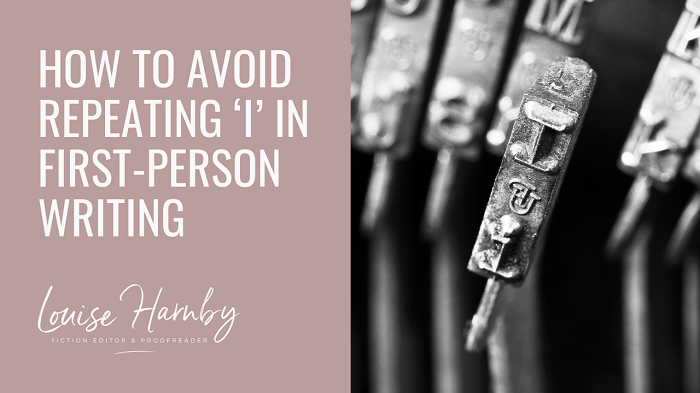
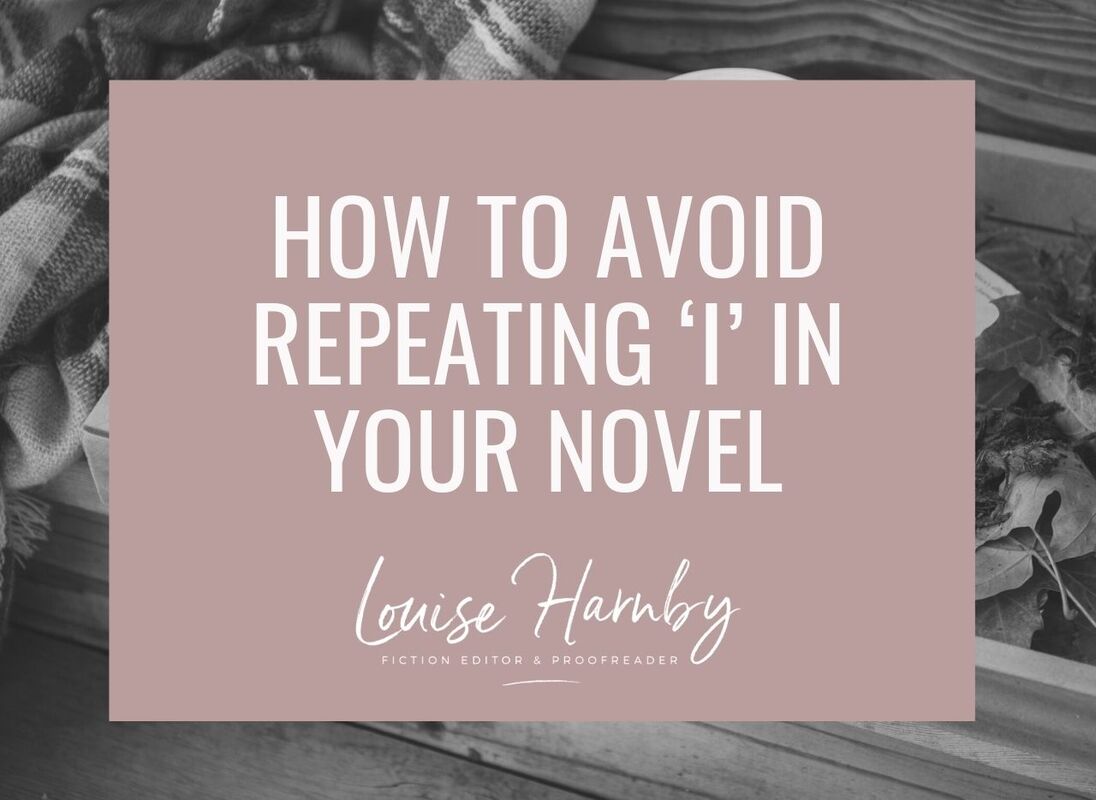

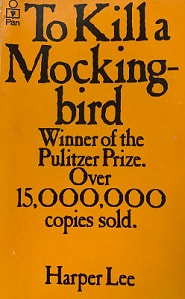
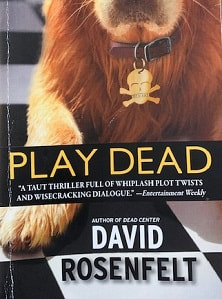








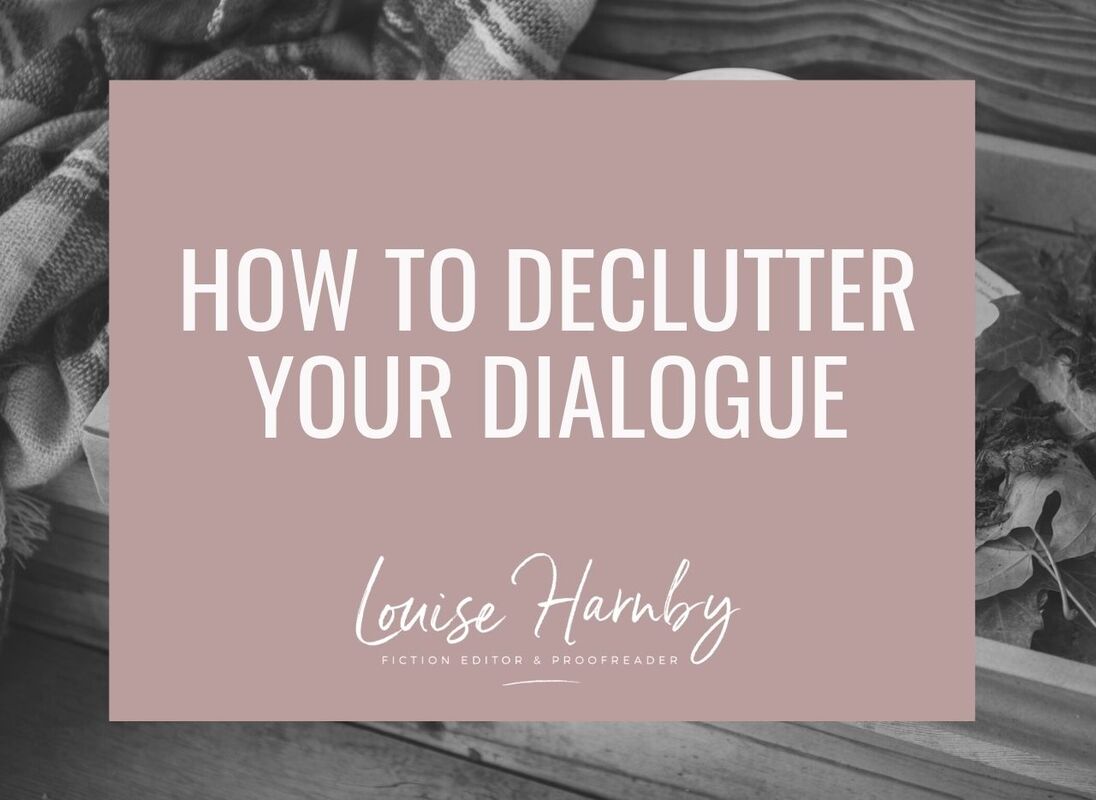
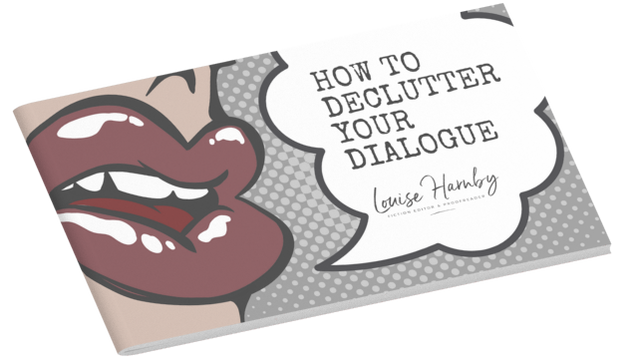
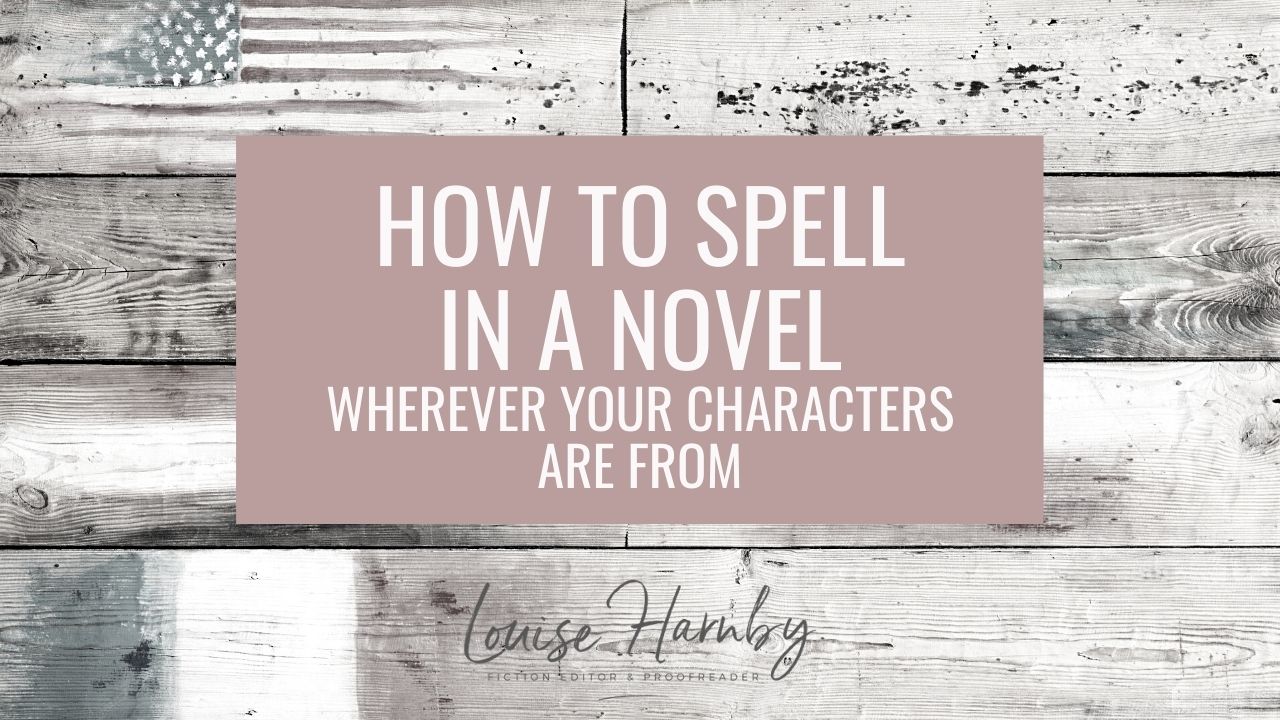
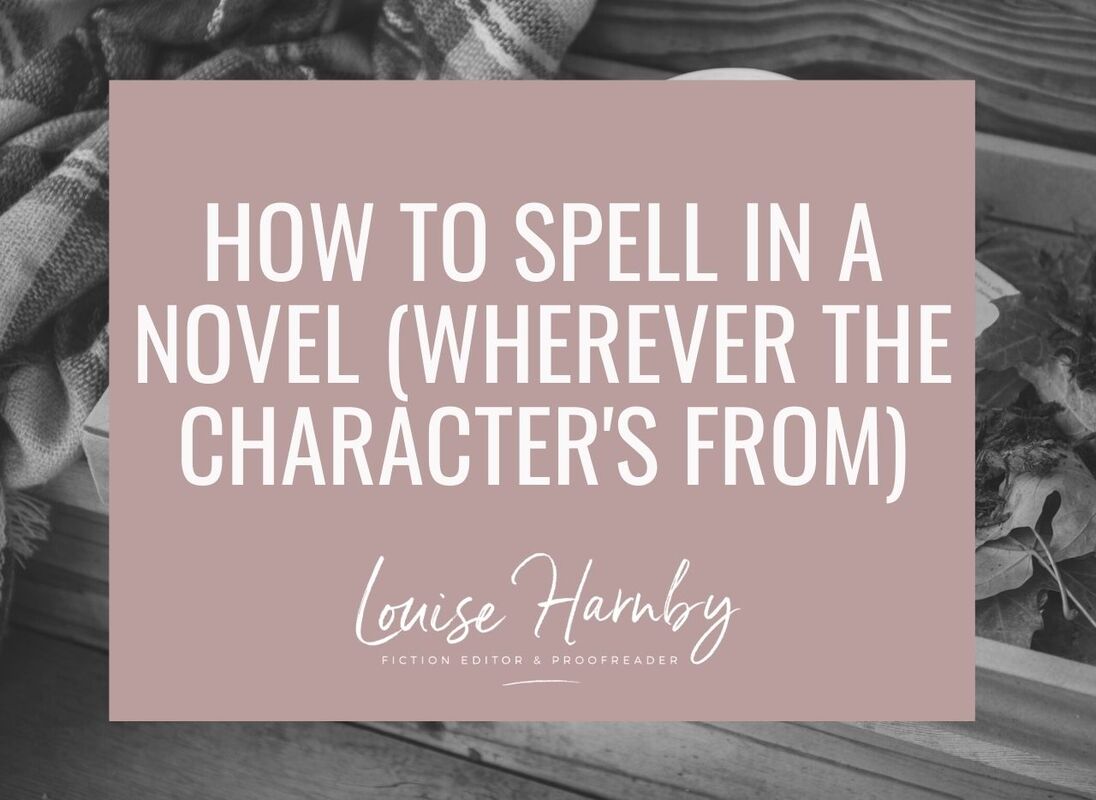








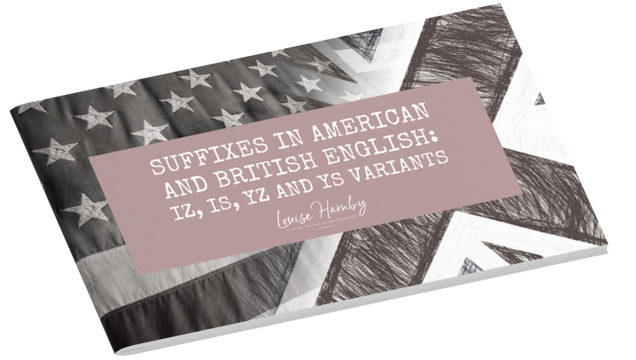













 RSS Feed
RSS Feed





